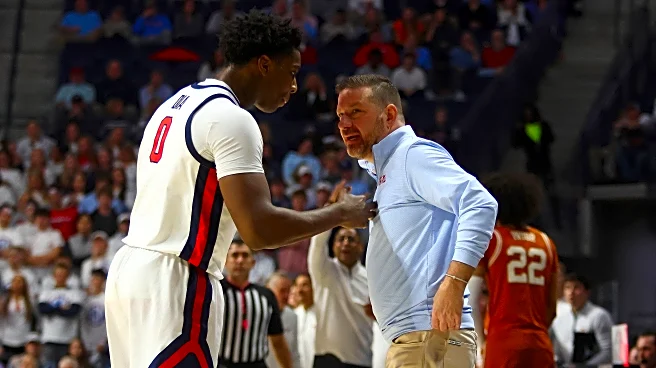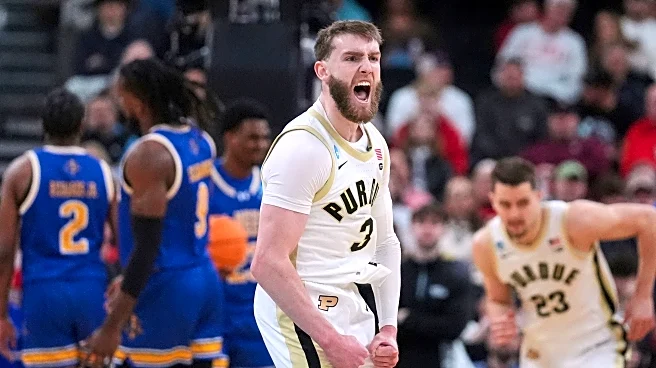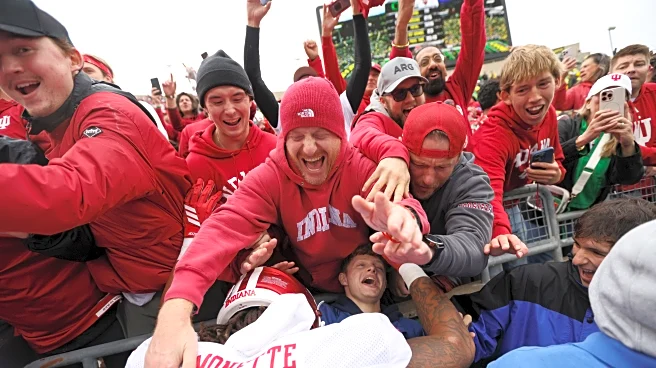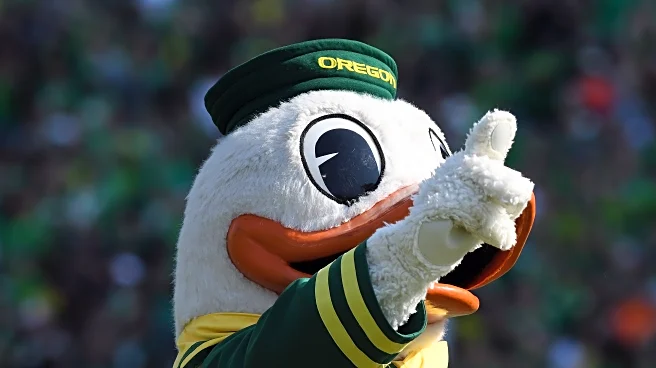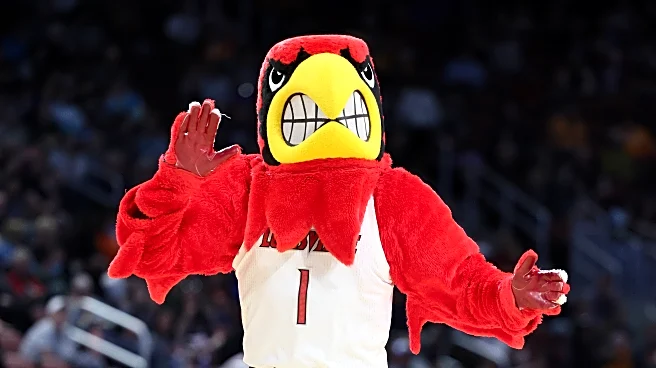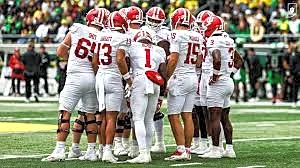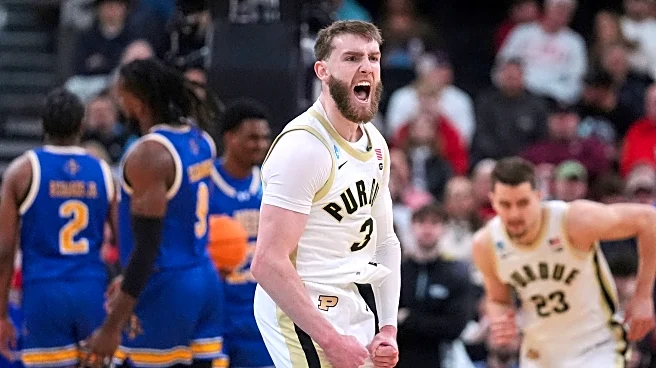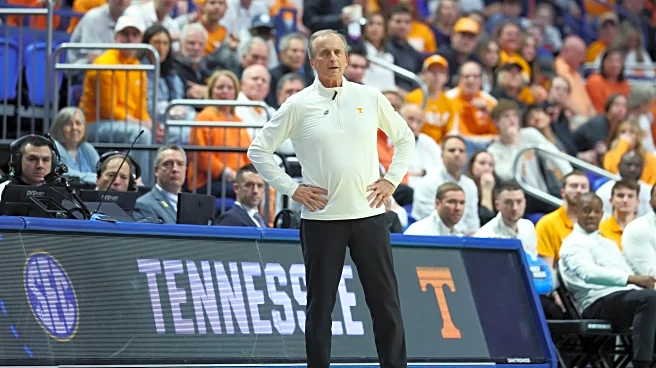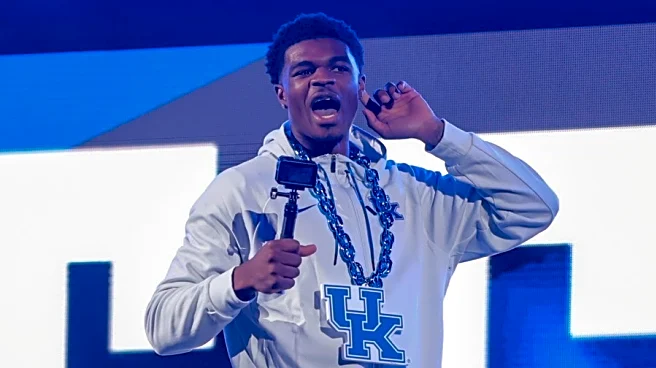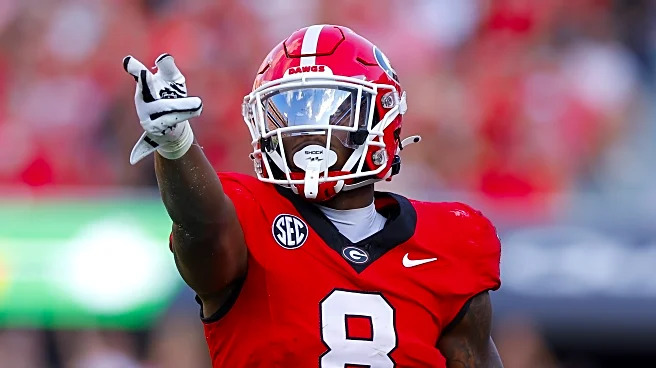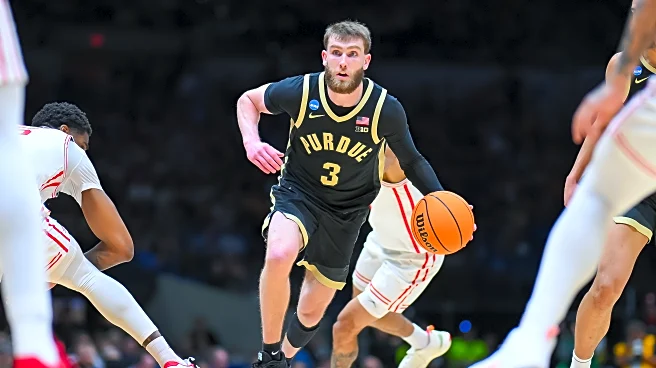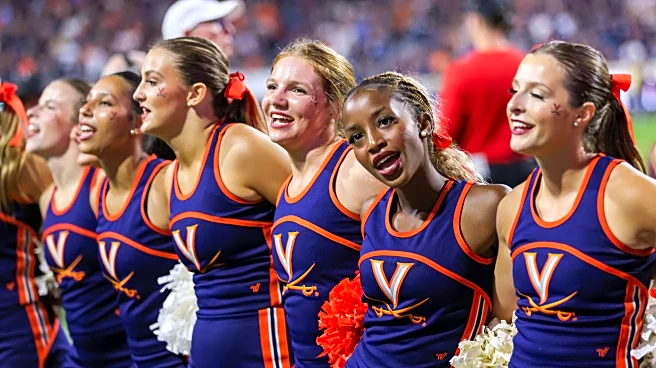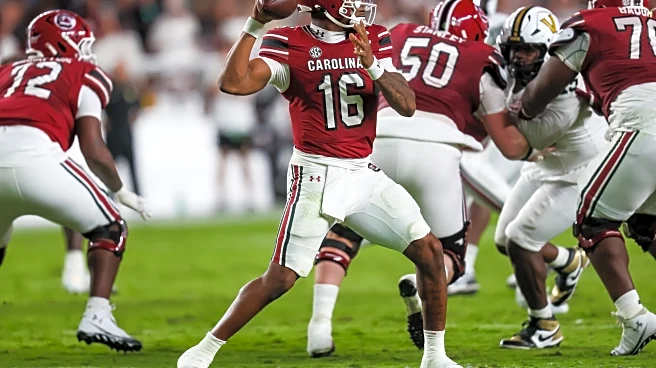A year ago there was still some skepticism around the Chris Beard era in Oxford. Maybe nationally there were believers in the beleagured ex-Longhorn coach, but within SEC circles you could see much more of a wait and see approach being taken.
Beard proved last season he’s still got the juice, however. As the Rebels took advantage of the senior-plus seasons of Jaemyn Brakefield and Matthew Murrell, added Sean Pedulla, Dre Davis, and Malik Dia to the mix and built a top 25 level resume which culminated
in an Sweet 16 appearance where they lost to Michigan State.
But nothing to be ashamed about, Ole Miss went to their first NCAA tournament since 2019, won their most games since 2010, and had their best KenPom.com ratings finish since Rod Barnes took the Rebels to a 3 seed in 2001.
The only problem is Ole Miss was very senior laden, and so now Beard has an entire roster to rebuild.
Previous SEC Previews:
- 14. Georgia Bulldogs, 6-12
- 15. South Carolina Gamecocks, 4-14
- 16. LSU Tigers, 3-15

Ole Miss Rebels
- Last season: 24 – 12 (10-8 in conference) #22
- The Masses Prediction: 11th in conference, 7.07 – 10.93
- SEC Media Pick: 8th
- Analytics Average: 11th in conference, 36th overall

HEAD COACH: Chris Beard | 3rd Season, 44-24
Last year I dubbed Chris Beard the Icarus of College Basketball coaches. He went from unknown to one of the brightest and hottest coaches in the sport seemingly overnight. He flew so close to the sun, and then crashed hard. But what better way to rehab your image than taking over a program like Ole Miss?
The University of Mississippi has never consistently had a good basketball program. There have been pops here and there, and Beard is trying to fix that. Although there may be questions about his long term commitment. It’s been rumored Beard has been wanting to use the Ole Miss job to land a more presitgous gig, with the only issue being that Beard comes with baggage.
Ultimately, most schools only care if you win enough basketball games. Bruce Pearl was able to get away with a lot of uncomfortable headlines at Auburn, but he was able to hang on because he won. But Pearl’s issues weren’t the same as Beard. Which is why the separation from Texas, his dream job, came to fruition. There’s no question whether Beard is one of the better basketball coaches in the sport, but the question is if he’s able to keep his off the court life in order to continue his climb, or if he’ll again fly too close to the sun.
Ultimately, a place like Oxford may be good for Beard if he decides to stick it out. The expectations for the program are lower, but the resources are still of very good quality. It’s a good college town in a quiet place. You can win there, and with enough leeway, you can win big there.

It’s safe to say Beard has restored the baseline to be higher than what the Rebels were experiencing under Kermit Davis. In the last 10 years the program has seen the Tournament just twice, and last season’s 6 seed is the highest since the aforementioned 2001 season. Part of that was the excellence of the SEC, the overall quality of the league helped middle of the road programs land a few extra Quad 1 wins than in previous years. And any league losses were viewed as quality losses. Ole Miss had just one loss outside of the top 50 in Kenpom last year, a road game at Memphis. Their record was 24-12, but every loss was a Quad 1 loss.
The league won’t be as tough this season, and there appears to be quite a bit of malleability in the middle.
LOST PRODUCTION
11th in % minutes, 84.68% | 11th in % points, 84.24% | 11th in % possessions, 84.73%
Ole Miss is replacing a lot of production, and basically all of their ballhandling.
Murrell and Brakefield were stalwarts for the program the last four years, and it was notable for each to get their flowers with one big final season. The key playmaker on the roster was Sean Pedulla, a feisty shotmaker who gave the Rebels quality defense and shooting.
The entire league underwent a big overhaul, but Ole Miss really lost some leadership. The top five players in minutes played are gone, and 6 of the top 7, plus 7 of the top 9. It’s a lot to replace.


I’m not sure there was ever much worry Malik Dia would enter the portal after the season, but it’s a good thing he stuck around. Otherwise the roster would be completely new. The only other player with any rotational experience is Eduardo Klafke, who saw action in all 36 games but rarely for more than 10 minutes. Dia was much more of a fixture, however, but still only ended up slightly over half the available minutes played. For Ole Miss to be good this year, Beard is going to need a step forward from Dia in his time on the floor and production.
With so much production lost, Beard turned to the portal and delivered a relatively mixed bag. He added 8 new faces with five of them coming from other high majors.
Beard is looking to restart the career of the well travelled A.J. Storr. Well travelled, because Storr hasn’t played basketball in the same place two seasons in a row since the beginning of his high school life. He played at Bishop Gorman High School, then Arizona Compass Prep, then the IMG Academy. For college he committed to St. John’s, tranferred to Wisconsin, then spent last season at Kansas. The question will be which player will Ole Miss be getting? He led Wisconsin in scoring as a sophomore, but was reported to have been a disruption in the locker room. When he went to Kansas, expecting the same sort of primary scoring role, Storr suffered under Bill Self’s leadership. He averaged only 15.7 minutes per game and 6.1 points. Storry is clearly capable, it’s just whether Beard can extract his best while laying to bed his worst.
The only real scorer added to the roster was Kezza Giffa, a starting guard from High Point. Giffa is a big of an undersize off the ball guard, but Beard is accustomed to players like that having used Pedulla and Jaylen Murray last year with similar profiles.
Beard is also going to try to restart the career of former Washington Husky standout guard Koren Johnson, who struggled to stay healthy last year with Louisville. He’s joined by James Scott, another former Cardinal, who provided quality minutes on the interior for new UofL coach Pat Kelsey. I also really like the addition of Corey Chest, a redshirt sophomore who plays with high energy and athleticism and impacted the rotation last year at LSU.
In the freshmen class Niko Bundalo could stand out early, but Tylis Jordan has immense upside potential as a big wing.


It’s a roster full of intriguing additions but one bereft of sure fire consistent scoring. It’s easy to like what James Scott or Corey Chest can bring to a roster. Both are athletic forwards who play with energy, but neither are known for generating points. Niko Bundalo is a skilled big with a bit of a hot temper who plays through his competitive streak. Sometimes the energy can negatively impact his skill and playmaking, but if Beard can harness that intensity he’s got a future pro on his hands, but there’s a question of how much offensive contribution Bundalo will be ready for.
Perhaps the biggest hope is having the combination of A.J. Storr and 21 year old French combo guard Ilias Kamardine be the primary scorers, with Kezza Giffa taking on a bit of the Jaylen Murray role of primary ball handler but ultimately a floor spacer within the offense.
Storr is as big of a question mark as anyone on this roster based upon his up and down scoring the last two seasons, and discontentment at Kansas. But every bit as big of a mystery is Kamardine. The Frenchman declared for the 2024 NBA draft before withdrawing after having about a half dozen workouts. He spent 6 pro seasons in France, finishing last season at Jeanne d’Arc Dijon Basket where he averaged 19.3 minutes and 8.7 points over 55 games.
This move to international professional players is still largely an experiment, and while Kamardine has flashed early on in his pro career he hasn’t fully put it together playing in the higher league in Europe. How that translates to College Basketball and the SEC is anyone’s guess at this point. Kamardine is a different prospect than say Illinois Kasparas Jakucionis, who when he committed to the Illini was already thought of as a Lottery level prospect. Kamardine is like a lot of the newer international additions where he’s had a pro career already and isn’t thought of as a draftable prospect, but is still a quality enough ball player he should be an impact to the rotation.
There’s just a big question about many of those players in how much they’re going to impact each team they’re signed to. It’s an experiment because coaches have wanted to stay old through the portal, but the depth and quality of the portal has dried up a bit compared to recent years.


This is a pretty savvy schedule. There are some notable Quad 1 games and some quality Quad 2 games, and a hefty amount of Quad 4 contests, but 7 seems about the norm these days, especially for teams flipping most of their roster on the regular. The Rebels are starting non-conference play with an expected 7 wins with six flip-like games. Two of those Quad 2 games are at home, meaning those should be wins, then you’re looking at 4 tossups. Win just two of those and you’re setting yourself up well for conference play, where there will be a host of quality Quad 1 wins available.
Scheduling St. John’s is bold, but even N.C. State should be a tough but winnable game as that roster has been flipped by Will Wade in year one of taking over the Wolfpack.
THE RULING
If this ranking of 13th in the conference seems low, I do think this is about the floor for a Chris Beard coached team. And the projected record is 7-11 is really just a couple swapped games in conference from a much different result. This is really going to come down to a few things. And those are the following big questions that need to be answered.
The biggest question surrounding this roster is who is driving the offense?
There are no obvious answers, and Beard has taken several risky gambles on players with no proven track record of scoring consistently at a high level. The closest is AJ Storr, and you’ve seen what the upside and downside to Storr can be. Maybe Beard proves a more malleable leader for Storr than what he found in Lawrence, but that seems like asking a lot to call Beard malleable. Storr can be a good player, and a guy who can get you the necessary buckets, but he can also be flaky, and might need a much longer leash than other players. Greg Gard figured out to keep Storr productive, but even in Madison Storr flaked out a bit later in the season and was pretty up and down with his production.
If Storr is closer to what Kansas dealt with last season the offensive side is going to be interesting. Without Storr scoring, there really are only complimentary pieces. Koren Johnson averaged double figures at Washington two seasons ago, and injuries kept his out of the lineup last year in Louisville. But he still only played around 20 minutes per game in the two games he saw action in, and his point production was limited. Kezza Giffa averaged 14.5 points for High Point, but all you have to do is look at his former backcourt mate Duke Miles experience last year in Oklahoma to understand those points don’t always translate. Miles was a quality rotational player and started most of the games, but he wasn’t the offensive driver for the Sooners, and expecting that from Giffa might be pressing.
Malik Dia has produced to varying degrees, and averaged double figures last year. In the best case scenario he’s giving you a similar amount of production and either Storr or Kamardine are filling in as priority one on offense.
The good news is Beard figured out a way to make his roster work defensively after being a disaster two years go. They began forcing a lot of turnovers and the defensive improvement largely fueled the surge up the ratings. Getting defensive buy-in from this group will be another key to the Rebels maintaining the success they saw last year. Both Chest and Scott project to have great defensive seasons but the imports from the portal all have big question marks defensively.
Storr couldn’t stay on the floor because he struggled to defend, Travis Perry sunk the Kentucky defense at the point of attack when he was in the game, and Giffa’s defensive BPR might be the worst on the roster.
Our rankings might have Ole Miss lower than most but I think the general feeling here is that Chris Beard will figure it out. If you’re the gambling type that’s been a safer bet than most. Beard has gotten to where he’s at by figuring it out. But I’d feel better if I were looking at this roster and just saw fewer question marks and more answers on both sides of the ball.
Again, it’s probably likely Beard exceeds these expectations. It’s just harder to see than a few other teams above them.
My Results: Ole Miss Rebels — 13th in conference, 7-11
About the preview: a number of respected basketball bloggers were asked to submit one pick for the entire league schedule game by game. The game by game option allows us to account for the unbalanced schedule when addressing any kind of power rankings. Each set of picks are reflected in “the Masses” picks. Included in “the Masses” are various SEC media members who made picks at my request, as well as additional credit given to the analytics projections.
If you’d like to submit your picks, click here for the Google Form we used. If you want to know your results, send me an email.
Additionally, instead of relying solely on KenPom.com for the analytics site projections, we’re taking the average of the four main sites (EvanMiya.com, BartTorvik.com, Haslametrics.com, and KenPom.com) to give a closer consensus picture. These are weighted a touch for reliability.
The projections: This is new! In an attempt to be as accurate as we could be we increased the amount of analytics used to make individual projections which influenced how these teams slotted in order. Matt Watkins used an in-depth method for projecting the entire SEC transfer list, we then mixed in EvanMiya.com’s BPR projections, and BartTorvik.com’s preseason individual projections to round out the expected production based upon how each coach routinely uses his rotations.
GLOSSARY
* – an asterisk denotes a walk-on player
GP – Games Played
%min – percentage of total available minutes played, does not account for time missed due to injury
%poss – percentage of team possessions the player is responsible for ending a possession, whether by making a shot, missing a shot not rebounded by the offense or committing a turnover. For returning players this is noted as a percentage of total team possessions. For newcomers it was total possessions when that player was on the floor, better known as Usage Rate.
ORtg – Offensive Rating, similar to a points per possession but averaged out over 100 possessions. So it’s how many points a player would score if they were responsible for 100 possessions.
BPR – Bayseian Performance Rating, a single player efficiency metric created by Evan Miyakawa to determine both offensive and defensive impact when a player is on the floor.
PAR – Points Above Replacement, a Rock M+ proprietary rating measuring projected on-off impact adjusted for time on the floor.
PPG – Points Per Game, RPG – Rebounds Per Game, APG – Assists Per Game: All traditional statistics used to measure player production.
For newcomer player rankings, we used EvanMiya.com’ s rankings for transfers, and 247sports.com ‘s Composite Rating for Freshmen and Junior College signees.
